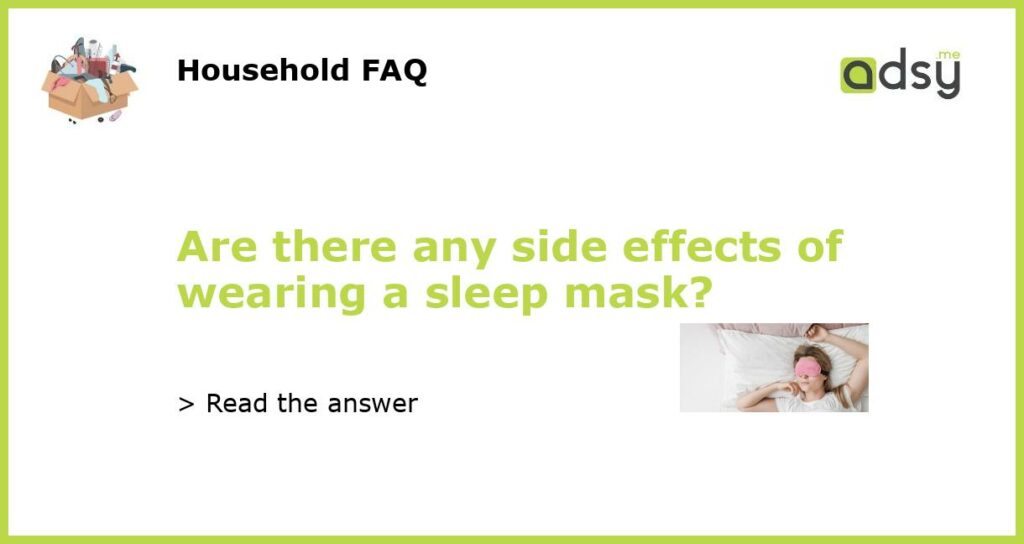Sleep masks have become increasingly popular in recent years as a solution to improve sleep quality. They are widely used to block out light and create a more conducive sleeping environment. While sleep masks can be beneficial for many individuals, it is important to consider the potential side effects that may arise from wearing them. In this article, we will explore the possible side effects of wearing a sleep mask and provide insights on how to mitigate these concerns.
Pressure on the Face
One of the potential side effects of wearing a sleep mask is the pressure it puts on the face. The tight elastic band that keeps the mask in place can cause discomfort and leave marks on the skin. Some individuals may find this pressure to be bothersome, especially if they are sensitive to touch or have pre-existing skin conditions. It is important to find a sleep mask with an adjustable band that can be customized to fit comfortably without causing excessive pressure or irritation.
Disruption of REM Sleep
REM (Rapid Eye Movement) sleep is a crucial stage of the sleep cycle where dreaming occurs. It is associated with memory consolidation, emotional regulation, and overall cognitive function. Wearing a sleep mask may potentially disrupt REM sleep by interfering with the natural movement of the eyes during this stage. The reduced eye movement may result in a less restful sleep experience. While this is not a concern for everyone, individuals who prioritize REM sleep should consider the impact a sleep mask may have on this stage of the sleep cycle.
Trapping Heat and Moisture
Wearing a sleep mask can create a warm and moist environment around the eyes. This may be uncomfortable for some individuals, particularly those who are prone to sweating or have oily skin. The trapped heat and moisture can contribute to skin irritation, acne breakouts, or the exacerbation of existing skin conditions. To mitigate this side effect, it is essential to choose a sleep mask made from breathable materials that allow for proper airflow and minimize excessive moisture buildup.
Disturbance of Sleep Position
Sleep masks can sometimes shift or move during the night, especially for individuals who tend to change positions frequently while sleeping. This may result in the mask no longer effectively blocking out light or becoming tangled in the hair, causing discomfort. To minimize the risk of sleep mask disturbance, choosing a mask with a secure fit or utilizing sleep mask accessories, such as adjustable straps or adhesive strips, can help keep the mask in place throughout the night.
Dependency on Sleep Mask for Sleep
Another potential side effect of wearing a sleep mask is the development of dependency. Some individuals may become reliant on the sleep mask to achieve a good night’s sleep, making it difficult for them to fall asleep without it. This reliance can create a psychological barrier to sleep and may lead to difficulties when sleeping in environments without access to a sleep mask. It is important to strike a balance and use sleep masks as a tool to enhance sleep quality rather than becoming dependent on them as a necessity.
Sleep masks can be beneficial for improving sleep quality by blocking out light and creating a more conducive sleeping environment. However, it is essential to be aware of the potential side effects that may arise from wearing a sleep mask. These include pressure on the face, disruption of REM sleep, trapping heat and moisture, disturbance of sleep position, and dependency on sleep mask for sleep. By selecting a well-fitting mask, addressing any discomfort or skin concerns, and using sleep masks in moderation, individuals can minimize the likelihood of experiencing these side effects and enjoy the benefits of improved sleep.






